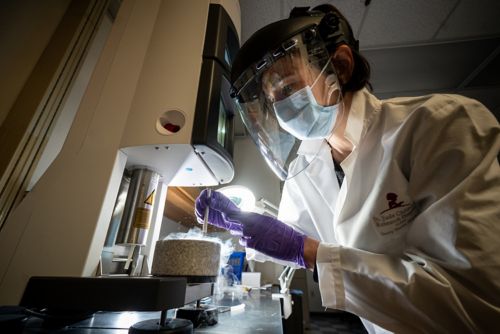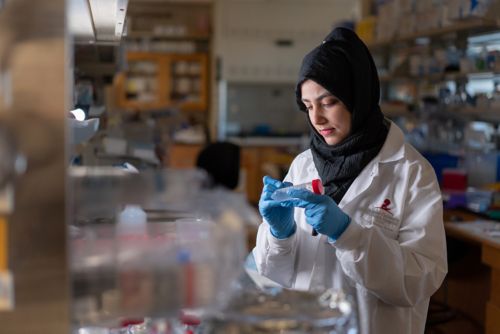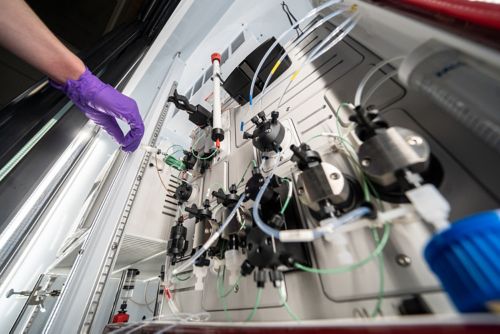About the Halic Lab
Aberrant gene expression is an underlying cause of many diseases including cancer. Our laboratory aims to understand the mechanisms that govern genome regulation. Specifically, we are interested in identifying the complexes that regulate which genes are expressed, and which are silenced. Our efforts are both fundamental and translational in nature.

Our research summary
Understanding the control of genome expression is the cornerstone of the research in our laboratory. We focus specifically on the molecular mechanisms underlying the recognition of repetitive and transposable genetic elements and epigenetic silencing by heterochromatin formation.
Recognition of foreign genetic elements
One area of research in our laboratory uses genetics and genomics to understand how cells recognize a new foreign genetic element — e.g., a transposon invading the genome — and determine what genes need to be silenced. Our laboratory previously found that there are specific small RNAs generated from repetitive genome. These small RNAs are involved in the initial step of recognition of foreign genetic material, and we are currently deciphering the principles guiding this recognition and identification of foreign vs. native DNA.

Chromatin modification dynamics
Another project focuses on structural mechanisms of chromatin modifications, particularly how different enzymes modify nucleosomes to silence or initiate transcription. Histone modifications are frequently altered in cancer, yet we know little about mechanisms underlying their function. Here we use cryo-EM to explore how different chromatin-modifying enzymes, such as histone methyltransferases, recognize and place marks on nucleosomes. We are additionally interested in how these marks are translated into gene expression control and in the cross-talk between different modifications.
DNA repair by PARP
Our laboratory has recently launched a new line of investigation that centers on the repair of damaged DNA in chromatin. We are exploring how poly-ADP-ribosylation enzymes (PARP) recognize DNA breaks, and recently discovered that that PARP binds DNA breaks, forming in essence a “bridge” for repair by DNA ligases. Since PARP inhibitors are being used in cancer treatments, we are studying their effects on chromatin and how they affect DNA damage repair in cancer cells.
The methodological approaches we employ in our laboratory include cryo-EM, molecular biology, biochemistry and genetics.

Selected Publications
Contact us
Mario Halic, PhD
Structural Biology
M6418
St. Jude Children's Research Hospital
Follow Us

Memphis, TN, 38105-3678 USA GET DIRECTIONS